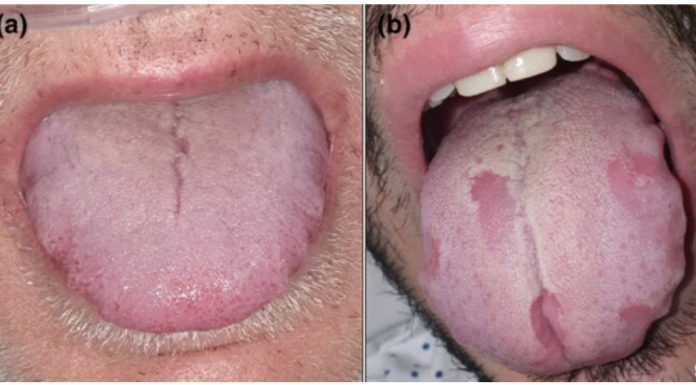WebMD – A professor in the United Kingdom says he’s finding more COVID-19 patients reporting oral problems, such as tongue discoloration and enlargement.
Tim Spector, a professor of genetic epidemiology at King’s College London, tweeted:
“My mail is full of tongues each morning from people who had tongue problems that coincided with Covid symptoms like fever and fatigue – but baffled doctors.
“Happy to share so we all become experts …”
Spector included one of the many tongue photos he receives daily.
He said 35% of people have non-classic symptoms of COVID in the first 3 days, such as “skin rashes, covid toes and the 20+ symptoms of covid that go ignored.”
The CDC does not include swollen or discolored tongues as symptoms of COVID-19, but the list of symptoms has grown since the pandemic began …
Click source below to read more.
Tongue Problems
Michigan Medicine, University of Michigan – Brightly colored changes in the color of your tongue may be caused by eating or drinking something that may have stained your tongue, such as soft drinks or candy.
The bright colors can be alarming. Stains caused by soft drinks or candy will brush off or wear off.
A buildup of food debris and bacteria on the tongue may make the tongue look thick or furry (” hairy tongue”).
A person with a hairy tongue often has severe bad breath (halitosis).
Soreness is not usually present. Often the problems will go away if the surface of the tongue is brushed with a soft-bristled toothbrush.
If your tongue problem is from some local irritation, such as tobacco use, removing the source of the irritation may clear up the tongue problem. Home treatment may be all that is needed.
Other common causes of tongue problems include:
- Deep grooves (fissures) of the tongue. Although deep fissures on the tongue are often normal, food particles can get stuck in the grooves, causing inflammation and tenderness.
- Lack of certain vitamins or minerals in your diet, especially B vitamins.
- Fungal infections (thrush), which produce white patches on the tongue and inside of the mouth.Injuries, such as biting, chewing, piercing, or burning the tongue … Read more.



